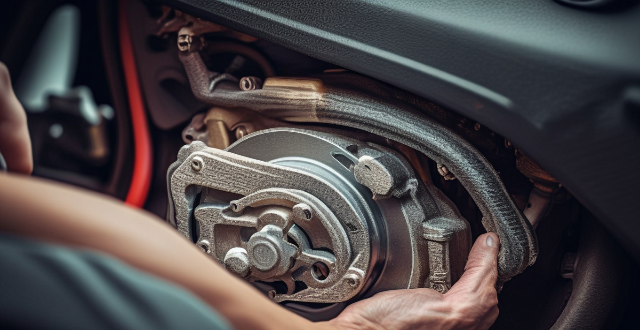Diagnosing a car's braking system involves identifying symptoms, visual inspection, listening and feeling during test drives, checking brake fluid, and seeking professional help if needed. It is crucial to address brake issues immediately for safety reasons.

How to Diagnose a Problem with Your Car's Braking System
When it comes to your car's braking system, safety should always be a top priority. If you suspect there is an issue with your brakes, it's crucial to diagnose and address the problem as soon as possible. Here's a step-by-step guide on how to diagnose a problem with your car's braking system:
Step 1: Identify the Symptoms
Pay Attention to These Signs:
- Squealing or Grinding Noises: When applying the brakes, if you hear a high-pitched squeal or a grinding noise, it could indicate worn-out brake pads or other issues.
- Vibration or Pulsation: Feeling a vibration or pulsation in the steering wheel or brake pedal when braking can suggest warped rotors or issues with the calipers.
- Soft or Spongy Brake Pedal: If the brake pedal feels soft or spongy underfoot, it may be due to air in the brake lines, a bad master cylinder, or low brake fluid.
- Poor Response: If the brakes are not responding quickly or effectively, this could be a sign of various problems, including contaminated brake fluid or damaged components.
- Warning Lights: The dashboard warning lights for brakes or ABS (Anti-lock Braking System) can provide clues about potential issues.
Step 2: Inspect Visually
Look for the Following:
- Brake Pads and Shoes: Check for excessive wear or damage to the brake pads and shoes. They should not be too thin or have visible cracks.
- Rotors and Drums: Examine the rotors and drums for scoring, heat spots, or other signs of damage.
- Brake Lines and Hoses: Inspect the brake lines and hoses for any signs of leakage, cracking, or damage.
- Brake Fluid Level: Ensure that the brake fluid level in the master cylinder reservoir is within the recommended range.
Step 3: Listen and Feel
Perform These Tests:
- Test Drive: Go for a test drive focusing on how the brakes feel and sound during different scenarios such as slow speeds, high speeds, and emergency stops.
- Brake Pedal Firmness: Press the brake pedal and assess its firmness. It should not feel too soft or too hard.
- Noise Reproduction: Try to reproduce any unusual noises you've heard while driving to pinpoint their source.
Step 4: Check the Brake Fluid
Fluid Analysis:
- Color and Consistency: The brake fluid should be clear to slightly yellowish. Dark or murky fluid indicates it needs to be replaced.
- Level Check: Ensure that the brake fluid level is correct and not low, which could indicate a leak.
Step 5: Use a Mechanic's Help
Professional Diagnostics:
If you're unsure about what you're seeing or feeling, it's time to take your vehicle to a qualified mechanic for further diagnostics. They might use specialized tools like:
- Brake Caliper Tools: To check the condition of the calipers.
- Brake Meter: To measure the thickness of brake pads and rotors.
- Pressure Bleeder: To bleed the brake system if there are air bubbles.
Conclusion
Diagnosing a problem with your car's braking system involves careful observation, inspection, and testing. Always prioritize safety and seek professional help if you're unsure about any aspect of the diagnosis process. Remember, brakes are a critical safety feature of your vehicle; never ignore signs of trouble.